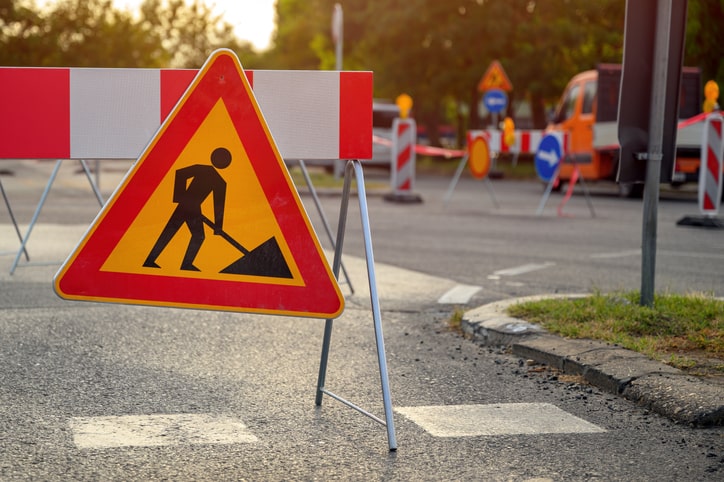Roads and sidewalks are the lifeblood of our communities, connecting us to work, school, family, and friends. But what happens when those vital arteries are disrupted by construction and repair work? While road improvements are necessary to keep our infrastructure safe and functional, the process of completing those projects can create new hazards, especially for pedestrians. At Altman Nussbaum Shunnarah, our personal injury attorneys know how road work in residential neighborhoods across Massachusetts can lead to devastating accidents and injuries. Let’s explore the risks that road construction poses to pedestrians and what you need to know to stay safe.

Dangers of Road Work for Pedestrians
Road work creates obstacles and hazards that pedestrians must face with extra caution. Some of the most common dangers include:
- Uneven pavement: Construction often requires tearing up sidewalks and road surfaces, leaving behind uneven terrain, holes, and loose gravel that can cause pedestrians to trip and fall. Temporary patches and metal plates covering holes create uneven walking surfaces as well.
- Detours and closures: Road work may require detouring pedestrian routes onto less familiar streets or across busy intersections that lack proper crosswalks and signals. Sidewalk closures can force pedestrians to walk in the street alongside traffic.
- Construction vehicles and equipment: The presence of large trucks, excavators, cranes, and other heavy machinery on residential streets creates additional hazards. Pedestrians may have to walk close to this equipment or be less visible to operators. Vehicles entering and exiting the construction zone can also strike pedestrians.
- Confusing signs and signals: Work zones often have temporary signs, cones, and barriers to redirect traffic and pedestrians. However, this unfamiliar and ever-changing landscape can create confusion. Pedestrians may be uncertain about where to walk or may miss important warnings and instructions.
- Limited visibility: Construction work often stirs up dust and debris that can obscure visibility. Pedestrians may have trouble seeing vehicles, equipment, and hazards. The visual clutter of a work zone also makes it harder for drivers to spot pedestrians.
Statistics on Road Work and Pedestrian Accidents
While there is no definitive data on pedestrian accidents in work zones, a report from the Federal Highway Administration found that each year, hundreds of pedestrians and bicyclists are injured or killed in work zone crashes nationwide. An analysis by the Massachusetts Department of Transportation also found that pedestrians accounted for 31% of construction zone traffic fatalities in the state between 2005 and 2014, more than double the 14% average across all types of fatal crashes statewide.
Age appears to be a key risk factor, with about half of all pedestrian work zone fatalities nationwide involving people over 55 years old. In Massachusetts, pedestrians 50 and older were involved in a disproportionately high share of fatal construction zone accidents compared to their involvement in fatal crashes overall. Children are also vulnerable, as they are less visible to drivers and may have difficulty understanding and following detour instructions.
Staying Safe Around Road Work
While work zones are a fact of life, there are things you can do as a pedestrian to reduce your risk of being injured in a construction area:
- Follow all posted signs and instructions from workers. Do not enter areas that are closed off.
- Use designated walkways and crossings, even if it means going out of your way. Avoid walking in the street or through the work zone itself.
- Be alert and avoid distractions like headphones or looking at your phone. You need to be able to see and hear any warnings or hazards.
- Wear bright, reflective clothing to increase your visibility to drivers and equipment operators, especially at night.
- Make eye contact with drivers and equipment operators before crossing in front of them. Do not assume they see you.
- Watch for loose gravel, uneven surfaces, holes, and debris that could cause you to trip. Take extra caution on temporary surfaces.
- Consider avoiding a work zone on foot altogether and find an alternate route, especially if you are with children or have mobility challenges.
Trust Our Experienced Attorneys
At Altman Nussbaum Shunnarah, we have extensive experience representing pedestrians injured in work zones and other accidents across Massachusetts. We can investigate the circumstances around your accident and fight for maximum compensation. Consultations are always free, and we do not charge fees unless we win the case. No one should have to fear for their safety just walking in their neighborhood. If you have been harmed by negligent road work, we are here to help. Contact us today to discuss your case.




